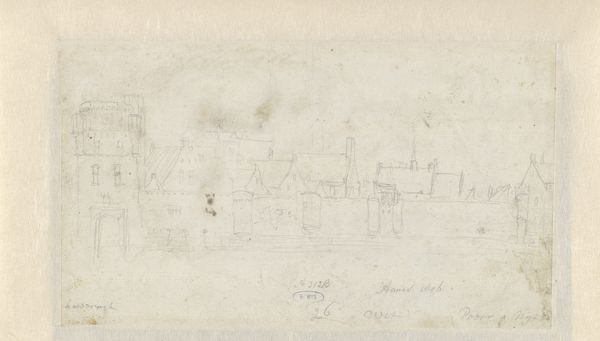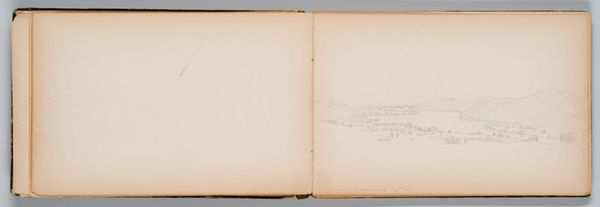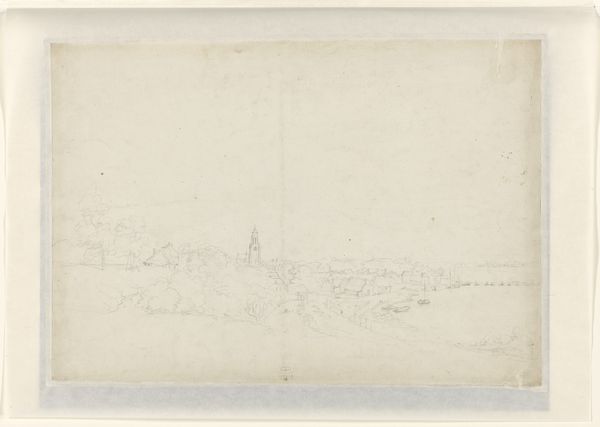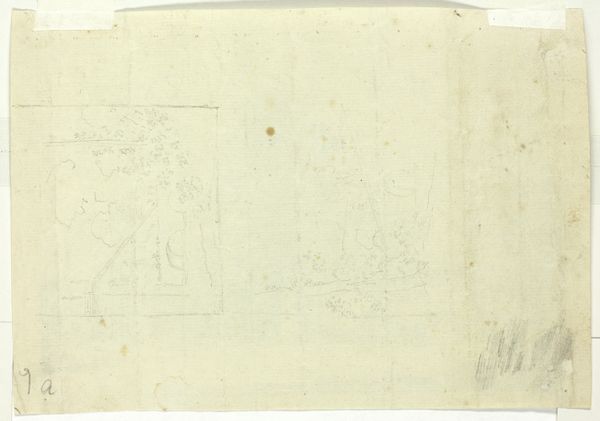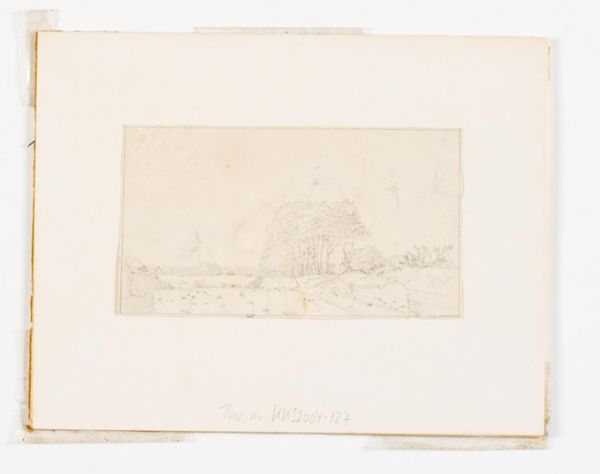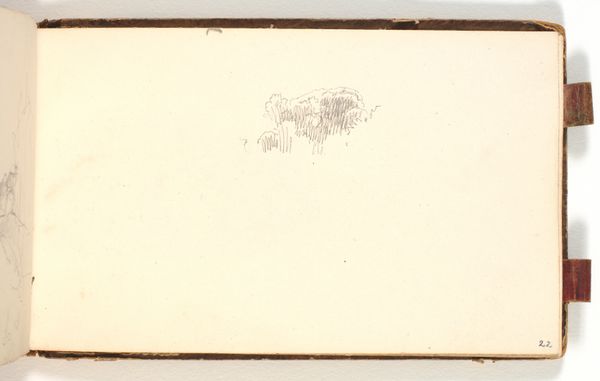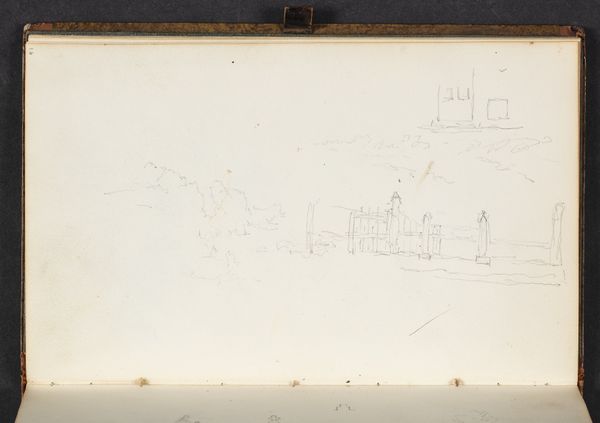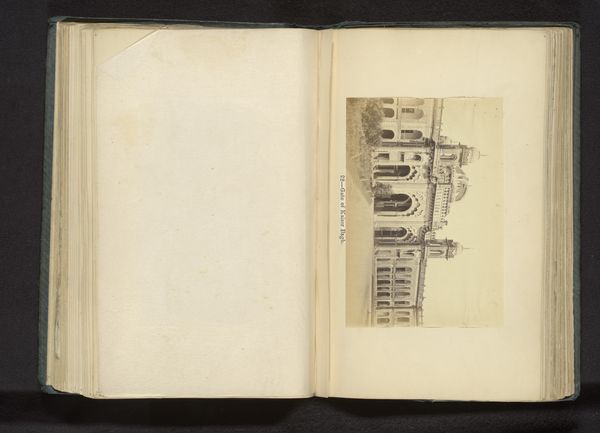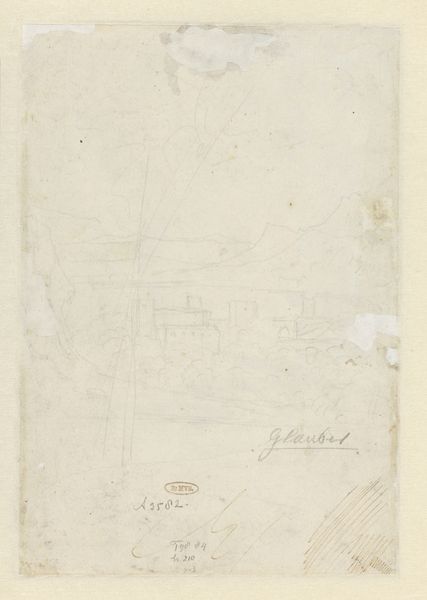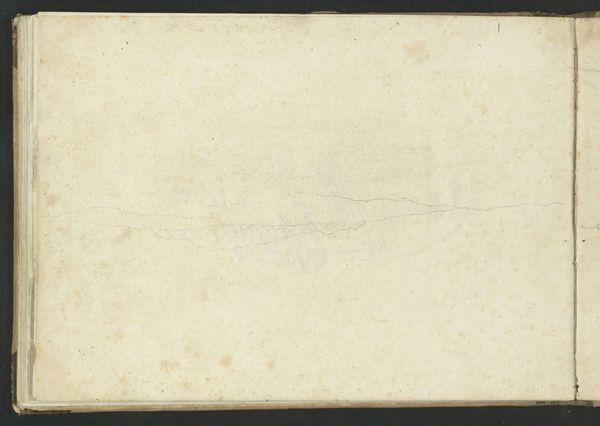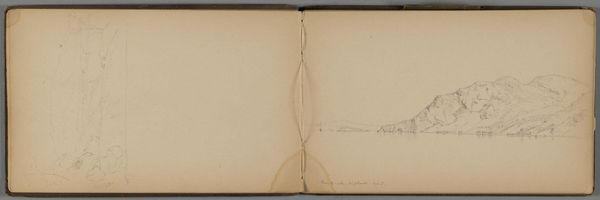
drawing, pencil
#
drawing
#
landscape
#
romanticism
#
pencil
#
cityscape
Dimensions: 182 mm (height) x 115 mm (width) (bladmaal)
Curator: Here we have a delicate pencil drawing titled "Prospekt af by, samt rids af profil," which translates to "View of a town, along with sketches of profiles," created between 1825 and 1826 by Martinus Rørbye. It’s held at the SMK, the Statens Museum for Kunst. Editor: My initial feeling is of distance and transience. The skyline is rendered with such lightness, as if the city might vanish like a dream. It gives a sense of quiet observation. Curator: Precisely. Rørbye, during this period, was deeply embedded in the Romantic movement, an era where artists grappled with ideas of national identity and the picturesque. These sketchbook pages become invaluable documents of places and cultural sentiments, reflecting how art captured a renewed interest in urban landscapes and identities in post-Napoleonic Europe. Editor: And consider the skyline itself. We see what appears to be a church spire dominating the composition alongside windmills, which suggests not only a townscape, but perhaps hints at human ingenuity meeting divine aspiration. A very Romantic dichotomy. Are there similar sketches from his travels that help us identify the locale? Curator: Absolutely. Rørbye made multiple sketches during his extensive travels. Some scholars argue that it’s been associated with sketches he made around Copenhagen and other smaller Danish towns, possibly during his training. What strikes me is that Rørbye presents a world undergoing rapid change—a world he actively documented, laying foundations for a public image of Danish identity. Editor: I see the faint suggestions of faces, those "sketches of profiles," almost ghosts emerging from the very fabric of the city. Do you think these portraits were intended to evoke a connection to the people within that evolving society? Curator: Inevitably, images of the populace reinforced notions of shared culture. He was making history through these quiet studies. This little drawing is actually powerful; even now, it creates discussions about cultural history. Editor: It shows us how humble sketches can echo with echoes of cultural memory and national identity.
Comments
No comments
Be the first to comment and join the conversation on the ultimate creative platform.
